How three cops and a DNA-first caught North Adelaide monster
FOR almost three years, the North Adelaide rapist eluded police. His crimes struck fear into residents and hospital workers. That was until an Australian-first DNA breakthrough unmasked the man responsible.
Story republished courtesy of the Police Association of South Australia.
THE two detective brevet sergeants were closing in on their rape suspect. They finally had him in sight and within their grasp.
Their hearts thumped, and adrenaline surged through their bodies. This was the moment of truth in Operation Earnest.
Special Crimes Investigation Branch members Chay Summers and Michaela Tiss had longed to identify and arrest Patrick Mark Perkins.
His crimes, committed in North Adelaide, had made headlines and struck fear into locals and hospital workers.
And since 2012, when he committed the first of two DNA-linked sexual assaults, his identity had never been discovered.
That was until Bvt-Sgt Summers, Bvt-Sgt Tiss and their Special Crimes colleagues worked out who he was through months of solid detective work and DNA matching.
Special Crimes Investigation Branch detective sergeant Matt Lyons had assigned Summers to the unsolved cases as lead investigator in April 2015, and Tiss soon afterwards.
And, now, three months later, in a suburban shopping centre car park, the two detectives were seeing Perkins for the first time in person.
Tanned and sporting a goatee and shaved head, he was clad in blue jeans and a dark zip-up jacket over a hi-vis jumper.
As he strolled toward his parked car, he looked nothing out of the ordinary.
But this father-of-two and pigeon fancier was, in fact, a predator, dubbed the North Adelaide rapist.
And Bvt-Sgt Summers and Bvt-Sgt Tiss, backed up by Sgt Lyons and other Special Crimes detectives, moved in to arrest him for rape and assault with intent to rape.
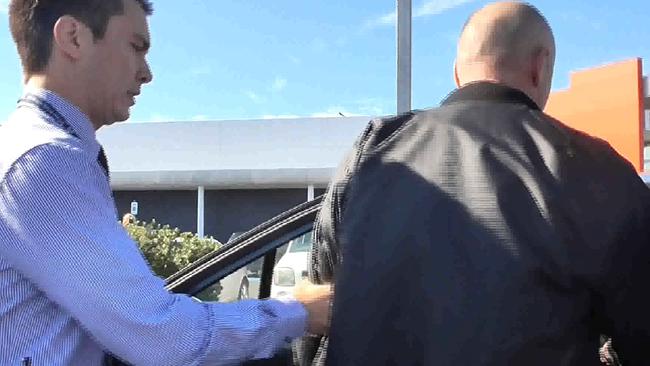
“And I was really sick that day,” Bvt-Sgt Tiss says. “I should’ve been home in bed, but there was no way I was missing out on that arrest.
“I’m not sure how I thought he’d react, but I couldn’t believe how emotionless he was.
“His facial expression didn’t change at all, and you’d think it would when someone’s arrested you for rape. He didn’t even blink. He was cold.”
Bvt-Sgt Summers, too, perceived Perkins as cold, and even unsurprised by his arrest. “When we first got up to him, he just had a look that (said) he was expecting this day to come,” Bvt-Sgt Summers recalls.
“I think he’d been preparing himself for that one day when police might come (for him). And this was the day.”
From the carpark arrest, the detectives took the no-longer-elusive Perkins back to his “meticulously clean” Enfield home.
And, there, at a dining table, began an interview, with Bvt-Sgt Summers asking the questions and Bvt-Sgt Tiss recording it all on camera.
Early in the exchange, Perkins shocked both detectives when he placed himself at the scene of the rape of a 23-year-old woman. Bvt-Sgt Summers had asked: “ … in relation to a number of sexual assaults which occurred in North Adelaide between 2010 and 2012, what can you tell me about that?”
Perkins replied: “One in Gover St … that was consensual. It wasn’t anything like what was said on the news …”
Bvt-Sgt Summers had not even specified Gover St as the location of one of the assaults. He remembers thinking: “God, he’s actually putting himself at the scene!”
Bvt-Sgt Tiss says: “It was probably a good thing that I was holding the camera, otherwise he would’ve seen my surprise. He spoke about it so casually, as if he hadn’t just raped someone on the street.”
Of course, the lie in the response Perkins gave was that of consensual sex with his victim.
Juliette (not her real name) had set out to walk home after leaving a local pub one midweek evening in September 2012.
She had met up with old-scholar friends, consumed just one drink, and lived only 400m away.
It was about midnight when she headed up O’Connell St and, then, into the particularly dark eastern section of Gover St.
Ahead of her on the footpath, she could see a man in the shadows, leaning against a tree with his hands near his crotch. As she moved to walk past him he made a remark about his genitalia, and Juliette could see that he had exposed himself.
He then grabbed her shoulder, shoved her to the ground, and uttered vile comments: “You’re going to have a piece of it … I can tell you want this”.
“Just be a good girl”.
Juliette, overcome with fear, thought she was going to die and simply froze.
“It’s not really a surprise that she went into that sort of fright mode,” Bvt-Sgt Tiss says. “I can imagine how shocked and terrified she would have been.”
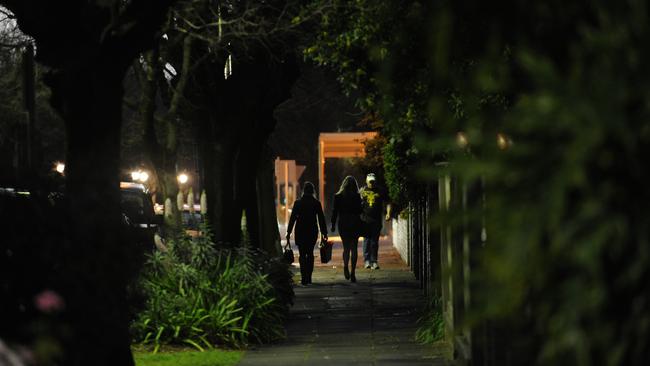
PERKINS raped Juliette right there, on a grass verge, only metres from the front doors of several homes and opposite a primary school playground.
And, after the physical ordeal, he humiliated her with more words. “There’s a good girl,” he said.
“Don’t walk home alone anymore by yourself. You can go home now.”
Before he walked off toward O’Connell St, Perkins gave Juliette back her underwear, which he had taken from her.
She then walked the rest of the way home, where she called friends and the police.
Patrols responded but never found Perkins. Forensic Response members processed the crime scene where they found semen but no sperm, which suggested the offender might have had a vasectomy.
A DNA profile from the scene did not produce a match on the national database.
But Juliette, despite all that she had suffered, came up with a “brilliant description” of her attacker.
The result was an essentially perfect face image, which was a critical contribution to the Special Crimes investigation.
“I can’t believe how someone could’ve gone through the trauma that she did and still be able to give the detail she provided. It was amazing,” Bvt-Sgt Tiss says.
When Bvt-Sgt Summers came to the question of the second DNA-linked assault, Perkins again put himself at the scene. But, also as before, he lied about the circumstances.
The truth was that, two-and-a-half months after the rape of Juliette, 21-year-old Alice (not her real name) became another victim of Perkins.
She had been to the same local pub Juliette had visited and was walking home to her student accommodation about 2am on a Friday.
As she approached St Peter’s Cathedral, she could see a man there sitting on a ledge at the front of the building.
He muttered something, but Alice made no response and kept walking. And then came the attack.
Perkins grabbed her from behind, dragged her into the cathedral garden and threw her to the ground next to a tree.
Alice screamed and fought to free herself and flee but Perkins kept shoving her back to the ground.
Eventually, however, she did break free and, with her clothing ripped, fled toward the main gates of her student accommodation.
Police responded after receiving a report of the incident later that morning. Their subsequent investigation came up with a DNA profile from two sources.
One was blood on the blouse Alice was wearing and the other a cigarette butt found at the crime scene.
And the DNA profile matched the one from the Gover St rape. The impression Perkins tried to give under questioning was that he and Alice had had little more than a verbal stoush.

“We had an argument,” he told Bvt-Sgt Summers.
“Who’s we? Who’s the person?” Bvt-Sgt Summers asked.
“Whoever she was,” Perkins replied.
“What was the argument about?” Bvt-Sgt Summers asked.
“I don’t know,” Perkins replied. “It just erupted. She was drunk. She was coming along.
“I went to talk to her and … she just started yelling, calmed down, and then she … went to get past me or something and we were scuffling.”
After Special Crimes began its investigation into the North Adelaide sexual assaults in 2012, it released the face image of Perkins to the media. That strategy sparked an overwhelming public response.
Crime Stoppers received more than 300 contacts, which led to more than 80 persons of interest for detectives to investigate.
Most of them volunteered DNA samples and, in the end, all 80 were eliminated from the investigation.
Detectives also examined CCTV footage from every business house on and around O’Connell St but none of it brought a suspect to light.
Intense public concern brought about a push for tree trimming and improved street lighting in North Adelaide.
Other action involved the distribution of the face image on posters to businesses and by e-mail to university students and Women’s and Children’s Hospital staff.
But, despite investigators’ best efforts over the next three years, the sexual assaults on Juliette and Alice remained unsolved.

MATT Lyons had been one of the Special Crimes Investigation Branch detectives who first inquired into the two cases.
Then a detective brevet sergeant, he stuck with the investigation until September 2013, when he transferred to the Serious and Organised Crime Branch.
But he returned to Special Crimes as a detective sergeant and, in 2015, went about “rejuvenating the focus” of the investigation into the still unsolved sexual assaults.
He decided on a review and tasked it to Bvt-Sgt Summers, who identified three other previously investigated attacks in North Adelaide.
Bvt-Sgt Summers perceived them as “strikingly similar” to the ones on Juliette and Alice – and Lyons agreed with him.
The three attacks then became part of Operation Earnest, which continued to focus chiefly on the two DNA-linked cases.
Consultation with Forensic Science SA, and the review of the investigation, led to a plan to attempt a familial DNA search.
This would identify whether the profile of a close relative of the offender, Perkins, existed on the state DNA database.
If it did, it would drastically narrow the pool of suspects to a specific family, or extended family.
But familial searches – which, at the time, were only possible on the state database – had never proved successful. Still, in July 2015, the search went ahead – and it produced a breakthrough. There, on the DNA database, was the profile of someone closely related to the then unknown offender. It was a familial match.
The detectives were now able to focus their investigation on close relatives of the person found on the database, and Perkins, then 56, was one of them.
But Juliette and Alice had thought their attacker to be a man in his 30s.
“We’re looking at this and going: ‘No, this guy’s way over the age group’,” Sgt Lyons says.
But it was critical to not discount Perkins due to this discrepancy. It was just a matter of following the evidence rather than a description.
“We subsequently prioritised and investigated him (Perkins) as one of the persons of interest related to the familial DNA match.”
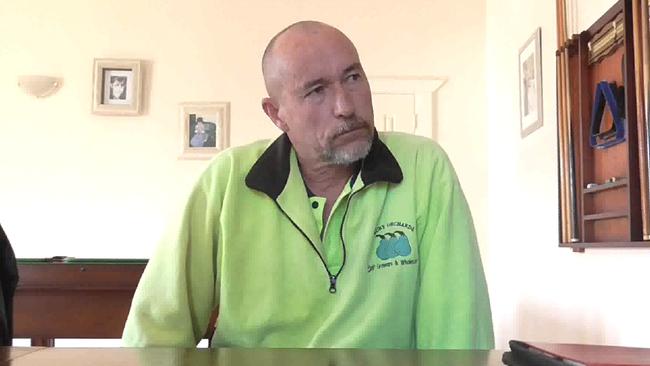
THAT subsequent investigation found that Perkins had come to the attention of police as far back as 2009.
Intelligence reports showed that, in June and October that year, officers had spotted him in his car in the Adelaide CBD.
Indeed, police stopped and spoke with Perkins six other times in the six years to 2015, in both the CBD and North Adelaide.
In April 2015, officers responded to a report of a man standing in bushes near the River Torrens with his hands near his crotch.
It was Perkins who, a witness alleged, was watching a woman walking along a footpath and, a short time later, following her in his car.
After police found and stopped him, he denied that he had followed the woman and claimed that he attended the area simply to relax.
Crucial to the investigation now was to secure a sample of Perkins’ DNA for comparison with the samples connecting the two sexual assaults.
That task was never beyond the investigators. They got the sample covertly and gave it to Forensic Science SA for urgent analysis.
The result was another breakthrough. All the DNA samples – from the assaults on Juliette and Alice, and from Perkins – were a match.
Special Crimes Investigation Branch boss Detective Superintendent Mark Wieszyk was first to receive the good news in a meeting with Forensic Services Branch and Forensic Science SA.
“I was excited to pass the news on to the investigators,” he says.
“Being the first-ever familial testing result in South Australia made it even more significant for our investigation.”
To Sgt Lyons, who was managing the administration of the investigation, the news was “one of those absolutely rewarding moments”.
Bvt-Sgt Tiss, too, rejoiced in the DNA match. She had not long returned to work from maternity leave but had joined SCIB just a fortnight before the Gover St rape.
“Finally,” she says, “it was a name to this face (image) that had been haunting us for years.”
Bvt-Sgt Summers simply thought: “We’re finally going to get this guy.”
And they did, in the Northpark Shopping Centre at Prospect on July 23, 2015.

AFTER the arrest came the on-camera interview, the search of Perkins’ home and, then, a trip to the city watch house.
The drive into the city was via O’Connell St. On the approach to Gover St, Summers noticed Perkins look toward the scene of the rape of Juliette.
At the watch house, Bvt-Sgt Summers and Bvt-Sgt Tiss formally charged him with that rape and the attempted rape of Alice.
But then came another extensive review. The aim was to explore possible links between Perkins and other unsolved sex attacks in North Adelaide.
“We then focused on the three sexual assaults Chay and I believed to be linked and looked at what other assaults might be attributable to Perkins,” Sgt Lyons says.
The detectives looked back at CCTV footage and witness statements and reconsidered the similarities between the assaults on Juliette and Alice.
“We started reviewing every sexual assault or robbery or act of violence, or attempt violence, against the lone female in North Adelaide for 15 years,” Sgt Lyons says.
“This was a significant amount when you think of all the people leaving pubs and different robberies and fights. We went through every single report there was.
“Ultimately, we discovered another two attacks we believed to be linked.”
Later, in November 2015, the officers charged Perkins with sexual assaults on five more women in North Adelaide.
Of the unsolved cases the detectives had studied, they considered those five overwhelmingly similar to the two DNA-linked assaults.
In 2005, a 20-year-old woman met the same fate Alice was to meet seven years later.
She had left the same local pub about 1am and taken the same walk along O’Connell St toward the same student accommodation.
As she walked through a grassed area near King William Road and Brougham Place, a man grabbed her from behind. She screamed.
Her attacker repeatedly slapped her face and said: “Let’s make this easy.” He slapped her again and then fled.
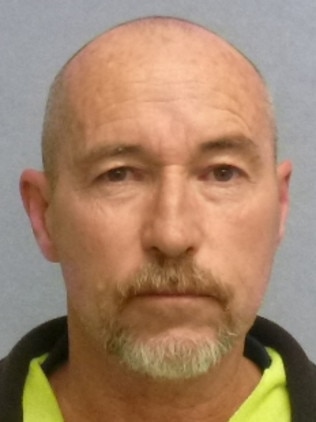
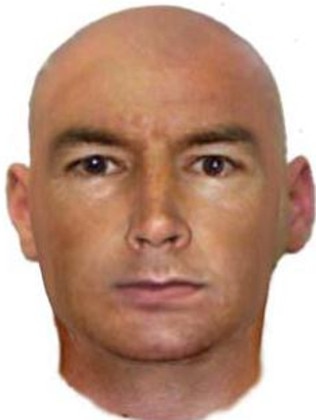
But a witness, who had heard the woman’s screams, saw the attacker commit the assault, get into a car, and drive away. And that witness got the make, model and colour of the car, as well as the last three digits of its registration number. Each of those details fitted a car registered to Perkins.
In 2006, two other women suffered attacks in North Adelaide. And the circumstances mirrored those of the previous year’s attack: the pub, the late hour, and the walk along O’Connell St toward the same student accommodation.
In the first case, the attacker grabbed a 20-year-old woman from behind in Bagot St.
She screamed. He placed his hand over her mouth, dragged her into Bagot Lane, pushed her to the ground and raped her. In the second case, the attacker confronted his 19-year-old victim in Bagot St after he had chased her across a grassed area just north of the street. He grabbed her with both hands before she broke free and fled.
In October 2010, another 20-year-old woman had left the same pub and headed off along O’Connell St toward the same student accommodation.
As she walked along Bagot St, a man grabbed and dragged her into Bagot Lane.
She screamed but he repeatedly ordered her to “be quiet” and attempted to rape her. After she managed to kick him, however, he fled.
In August 2011, a 19-year-old woman was walking along Kermode St, North Adelaide about 2:30am after she had left licensed premises.
She was headed for a house about 100m from the same student accommodation when a man grabbed her.
He thrust his hand over her mouth and instructed her not to say or do anything and, then, pushed her to the ground.
There, he tried to pull down her underpants, but she screamed and the attacker fled.
Victim Management Section brevet sergeant Ky Hammond joined the investigation team to work with all seven victims, five of whom lived interstate.
“The most important thing about this whole investigation was the victims, who have some real scars going forward,” Sgt Lyons says.
“So, bringing another person in to help the investigation team manage and assist the victims was really important.
“Chay and Ky flew to the different states around the country to visit the victims personally.
“I was lucky to have a team that was really invested. Really invested. Both Chay and Michaela were so tenacious, coming in on days off and always being the last to leave the office.
“We were prepared to do what had to be done, and we all felt the weight of responsibility we had for the victims. But we wanted to represent the fact that we took this case absolutely seriously.”
BVT-SGT Summers and Bvt-Sgt Hammond drew fresh information from the victims, who were all willing to give evidence in court.
Another aspect of the Special Crimes investigation was the movement of money. It emerged that, in the four years to 2012, Perkins’ bank card had been used for purchases and withdrawals 54 times on O’Connell St.
These North Adelaide transactions, which occurred between 9pm and 2am, stopped after the media campaign and distribution of the face-image posters.
Ultimately, in the District Court last December, Perkins pleaded guilty to rape and attempted rape in respect of the two DNA-linked cases.
The other five charges were set to proceed on a similar-fact basis, until Perkins’ defence made a successful application to have them heard separately.
Without a similar-fact case there was insufficient evidence to proceed.
Still, Judge Julie McIntyre sentenced Perkins to 12 years’ jail with a non-parole period of eight years. Bvt-Sgt Summers was in court to hear Juliette read her victim impact statement.
“It was extremely moving to hear,” he says. “She was devastated by this. It was good that she could get some closure and just move on because going through this process really was affecting her.”
Sgt Lyons, who was interstate on leave, felt an overwhelming urge to board a plane for Adelaide and get himself into the courtroom.
“I felt badly that it was left to Chay to call me and the five victims with news of the charges that didn’t proceed,” he says.
Bvt-Sgt Tiss was not able to be in court that day either but she did read the victim impact statement. She admits that it brought her to tears.
“I think no matter what sentence he got, it was never going to be as long as the suffering of these victims,” Bvt-Sgt Tiss says.
“When you think about the trauma they went through, they continue to live with that as their sentence forever.”
